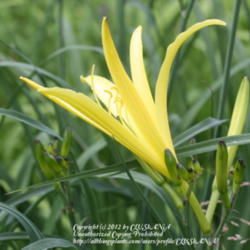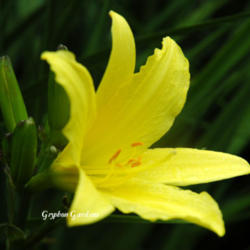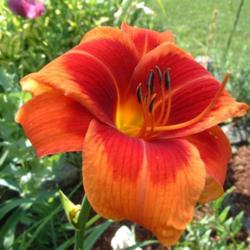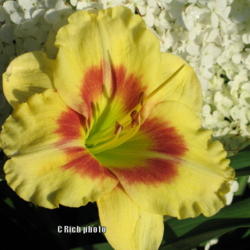So, here's my take on Chapter 1. (page 10 to 24)

The author is an MIT PhD whose interdisciplinary studies had a focus in medical imaging and optical processing (branches of Engineering and Medicine), with training in Botany and Horticulture (New York Botanical Gardens), and genomics (the function of complete sets of DNA) done while at MIT. He has been a Professor at MIT, Columbia University, George Washington University, and the Polytechnic University, as well as a Board Member of Yorktown University. He has hybridized daylilies for over 25 years, including crosses between species and modern hybrids, at his AHS Display Garden.
In his Introductory Chapter 1 he outlines the importance of approaching selective breeding (hybridization, as opposed to happenstance) with developing an attention to visual detail, consistent records, and clarifying terminology. For example, he shows us that when we cross modern cultivars we are really inbreeding on mainly 12 historical, stable species' lines in order to create various new cultivars with intensified colors, shapes, and patterns. Each of those foundational species contributed unique visual characteristics, among other attributes.
He begins his discussion of general color inheritance by outlining the hybridization of Hyperion, an early cultivar developed by F.B. Mead in 1924. Through this we learn about the sources for our modern daylily cultivars. He also introduces the concept of what I believe are pedigree generations (F0 are original parents, with the resulting offspring being F1, and so on). I try to remember the notation by calling “F” Family … Family 0 (F0) is like “ground zero” - the central trunk of the tree. Family 1 (F1) are children, F2 are grandkids, and so on. Recent cultivars can be found in the F40 range or more from species origins, after so many years of hybridization. These are believed to be the three F0 plants in Hyperion's ancestry:
There may be some confusion or disagreement about the third ancestor, either h. aurantiaca (Red-Orange medium with markings, bitone, or polychromeor) or h. aurantiaca Major (Yellow-Orange medium self) photo at
http://www.hemerocallis-specie... ... but both are noted as having the Orange (toward the Red end of spectrum) color tone the author discusses both in Chapter 1 and later in the book (I peeked!).
So, Hyperion would be an F2 (grandkid) to these three plants which had both orange and yellow color tones. Their F1 offspring included Sir Michael Foster (recorded as an orange-yellow medium 1904 cultivar from aurantiaca Major x citrina) and an earlier introduction, Florham (recorded as a yellow-medium 1898 cross from aurantiaca Major x thunbergii). Those two hybrids, crossed together, produced F2 Hyperion, a green-yellow. Intriguing!
In the 90 years of hybridizing from the original species, he highlights modern descendants to demonstrate some of the many complex changes in daylily flower colors and patterns:
Against this backdrop of the many varied forms and colors that have been developed over the decades, all from earlier hybridizations that had origins going back to wild species plants, McGarthy then poses questions that get the reader thinking about subjects that will be addressed later on, such as: How do genes affecting flower color get turned on and off? How are the sometimes abrupt pattern changes controlled? Are shape, form and color in some way linked together, as we sometimes see them appear at the same time?
Rapid changes in daylily colors and patterns are not known to be the result of hybridizers intentional changing, somehow adding, or manually mutating color genes (and not to be confused with "beefed up" identical Tet. genes, which are a simple multiplication of Dip. genes that can result in physical enhancements). So, the book looks at the role of genes in creating and controlling changes to color, patterns and petal shapes. It also promises to look at ways for all pollen dabbers to develop a systematic model for trying to create those desired traits. He then goes on to outline remaining chapters that will inform us about those systems, and gives helpful historical background to prepare people for those readings.




